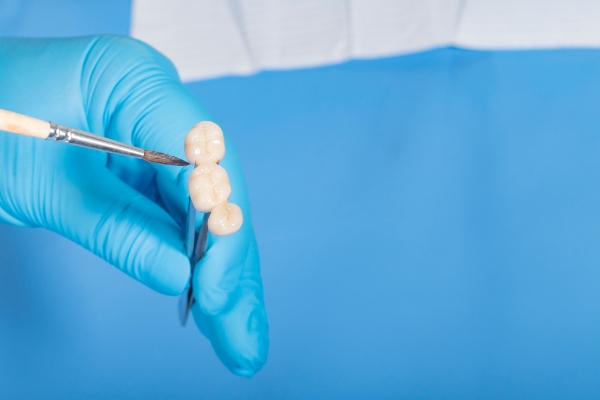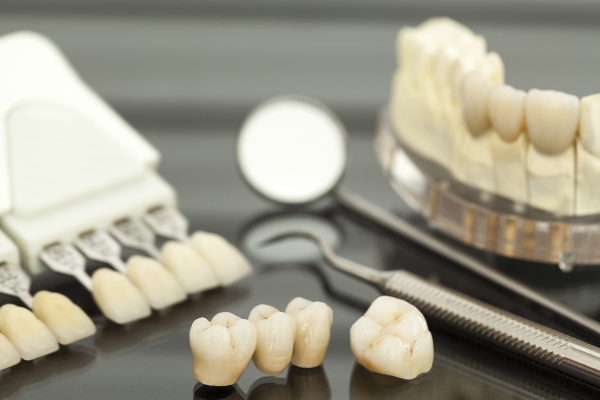Types of Restorative Dentistry

Along with preventive treatments, restorative dentistry is an important facet of dental care. Hopefully, you follow your dentist’s recommendation of visiting the office at least every six months for teeth cleaning and an examination. In between these regular visits, if you have troublesome issues, including pain and discomfort in your teeth, mouth, or gums, your dentist can provide relief. There are various restorative dentistry treatments available to get your oral health back where you want it and to help you feel and look good.
When to seek treatment
For many patients, it may seem easy to put off a visit to the dentist. It may even be natural for some people to avoid what can be anxiety-filled restorative dentistry appointments. However, the right time to go to the dentist to take care of a problem is now. The longer a person waits to fix a dental issue, the more severe the situation could become. It is much smarter to confront the problem immediately and have peace of mind than it is to keep pushing off visits due to fear or nervousness.
Fillings
Arguably the most common type of restorative dentistry, dentists use fillings to repair cavities in a patient’s teeth. The dentist will first numb the patient and will then drill into the affected tooth to clean out all the decay. Today, dentists usually use composite resin to fill in the cavities, though some may offer gold, porcelain, or silver amalgam. A composite filling is close to the color of the tooth, so it is virtually undetectable.
Crowns
For patients with more severe cavities or who have broken teeth, a crown may be the right restorative dentistry option. Crowns are made in a lab after the dentist has made an impression of the person’s mouth. At a subsequent restorative dentistry appointment, once the dentist has the crown from the lab, the dentist will shave down part of the affected tooth and place a crown or cap over it. This protects the integrity of the tooth and its structure. Caps are usually durable, but the dentist will likely keep a close eye on the restoration over the years to make sure it is firmly in place.
Bridge for restorative dentistry
For missing teeth, a bridge may be the most suitable answer for the patient. This restorative dentistry treatment takes care of these gaps and can eliminate the embarrassment the person feels about their smile and appearance. On both ends of the bridge, the dentist places a crown. In between the crowns are artificial teeth. It is designed to allow the person to chew and bite normally. In addition, bridges can also help keep surrounding teeth in the proper places.
Benefits of restorative dentistry
Dental restorations can bring back the shine in one’s smile. Restorative dentistry can help by focusing on dental alignments and gaps. The dentist will recommend restorations after severe decay, dental damage, and staining, as well as crowding. Here are the benefits that the patient can get from restorative dentistry:
- It improves dental structure. A person’s dental structure weakens and deteriorates once tooth loss occurs. Restorative dentistry improves one’s oral health. It can even help maintain the jawbone’s structure.
- It removes discomfort. Chipping, cracking, or decay can cause severe pain. Restorative dentistry can help treat the tooth. The procedure can remove the infection, as well as strengthen and protect teeth from future damage.
- It provides convenient solutions. Restorative dentistry can help patients regain dental health with the right types of dental restoration. These restorations are easy to maintain, remove, and attach. One restoration can replace many teeth. This saves the patient significant time and money.
- It improves the appearance of teeth. Decayed, missing, or damaged teeth can affect a person’s smile and self-esteem. The right restorative dentistry treatment can replace these teeth. The patient can then have a new smile.
- It provides lasting dental solutions. Restorative dentistry can provide durable dental solutions. Each one can last for years with proper care and maintenance. Talking to the dentist can provide the patient the instructions for proper restoration care. Keeping one’s appointments for dental checks and cleanings can help restorations last even longer.
Pick what is right
Significant dental issues can cause a lot of stress and anxiety for people that suffer from them. Luckily, there are ways to combat even the most serious problem. If you have broken or missing teeth or if you have painful cavities, inform your dentist without delay. Together, you can discuss restorative dentistry treatment options and get back on the road to feeling and looking better.
Request an appointment here: https://www.grandvalleydentistry.com or call Grand Valley Dentistry at (616) 259-6046 for an appointment in our Allendale Charter Twp office.
Check out what others are saying about our dental services on Yelp: Restorative Dentistry in Allendale Charter Twp, MI.
Recent Posts
Individuals who have broken teeth may suffer from a lack of self-confidence. Whether you broke your tooth eating something hard or experienced trauma that directly or indirectly impacted the tooth, it is a good idea to get it fixed. Treating a broken tooth has not only aesthetic benefits but also provides dental and overall health…
What can a restorative dentist do for patients? This is a big question with a lengthy answer. However, in a nutshell, restorative dentistry may be a good fit for many people.Patients should consider if they have problems with their teeth or if their teeth feels loose, wobbly, or if they get cavities easily. Restorative dentistry…
Unlike general dentistry, which focuses on routine examinations and treatment, restorative dentistry is a specialization focusing on the repair or replacement of damaged or missing teeth. Bruxism is a fairly common condition that causes the clenching and grinding of teeth. While no single cause exists for bruxism, the results of teeth grinding are well documented.…
Any dental work that is done to repair missing or damaged teeth are types of dental restorations, which can include anything from minor fillings to full implants. How long these restorations take depends entirely on what kind of work is necessary. Some procedures can be performed in a single short appointment, while others might be…


